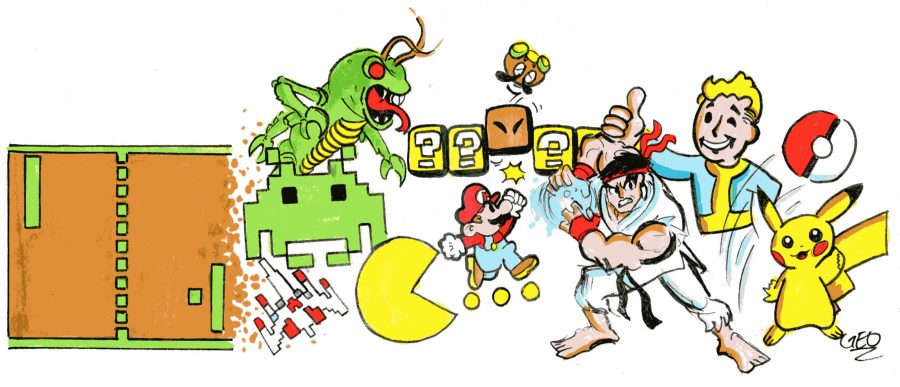Whether it’s coming up with an icon like “Pac-Man,” “Sonic,” or “Pokemon,” giving them new abilities, or allowing players to do more, the world of video game creation is seldom fun and games — especially when the final prize is winning a place in the history of a field barely in its infancy.
On July 29, the games that managed to steal a place in player’s hearts and memories will be on display at the Bob Bullock Texas State History Museum. The “Pong to Pokemon: The Evolution of Electronic Gaming” exhibition will feature behind the scenes work from iconic games in the last half century and give the public an inside look into the creative process of electronic gaming and what it holds in the future.
“What is interesting about computer gaming is it is the quintessential high tech art,” exhibit advisor Richard Garriott said. “While it is still growing rapidly and there are plenty of opportunities, it is literally not all fun and games. The amount of invention through labor that is required is exceptionally high.”
After over a year of development, Jenny Cobb, associate curator of exhibitions for the Bob Bullock Museum, said the full exhibit will take over the third third floor rotunda until March 18, 2018 — the museum’s longest-running exhibit to date. She said with technology advancing so quickly, they thought it would be appropriate to touch on what has been accomplished so far.
“Texas is second in the nation with the amount of game companies we house,” Cobb said. “We wanted to explore that history and why that was, and it kind of took on a life of its own from there.”
The exhibit will allow visitors to experience different stages of gaming, from “Pong,” one of the first video games featuring a black and white ping-pong simulation, to the animated world of “Super Mario Bros.” Cobb said in addition participating in the games, viewers will also get to see the behind the scenes work that goes into making their favorite characters come to life.
“People who maybe played ‘Pong’ and ‘Atari’ to come bring their kids and share this experience and people who don’t really know about video games and don’t think it affects their lives — we hope this exhibit will show them gaming is everywhere,” Cobb said.
For Garriott, his most vivid gaming memory involves “Pong” — soon to be featured as a distant building block in gaming history.
“Our family had a big console television sitting in the corner of the family room,” Garriott said. “We had to hook up this strange device physically to its antennas to see this very primitive black and white little ball being batted back and forth. As soon as I realized something like that could be done, I immediately realized this was something I wanted to figure out how to do.”
After creating three gaming companies and a video game series, Garriott has been a first-hand witness to history in the making. He said gaming has become a bigger industry than industries like TV and movies and while it has grown exponentially, it has also preserved classic elements of design in its history and left room for improvement.
“I think people will really see how much work went into each of these eras,” said Garriott. “Just to make a dog appear on a screen 40 years ago was phenomenally difficult. Today, that part of it is easy and instead that same level of effort is put into much grander results.”
Garriott said because gaming is subject to constant change in art and technology, it is nearly impossible to stay ahead of the game.
But for those willing to work in the rapidly evolving field, there are high rewards — namely, creating something that has never been attempted before.
Garriott said his advice to those wishing to join the industry is to become familiar with every aspect involved in electronic gaming, from programming languages to 3-D modeling to digital and audio recordings.
Christopher Norman, Arts and entertainment technologies lecturer, said he tries to give those studying video game design enough space to learn and create on their own. He said one of the most important keys to being successful in this industry is connecting with the project on a personal level.
“Don’t just look at something and make a copy of it, because people feel that and see it,” Norman said. “Do something off the wall. Student work often inspires the industry of the future.”















